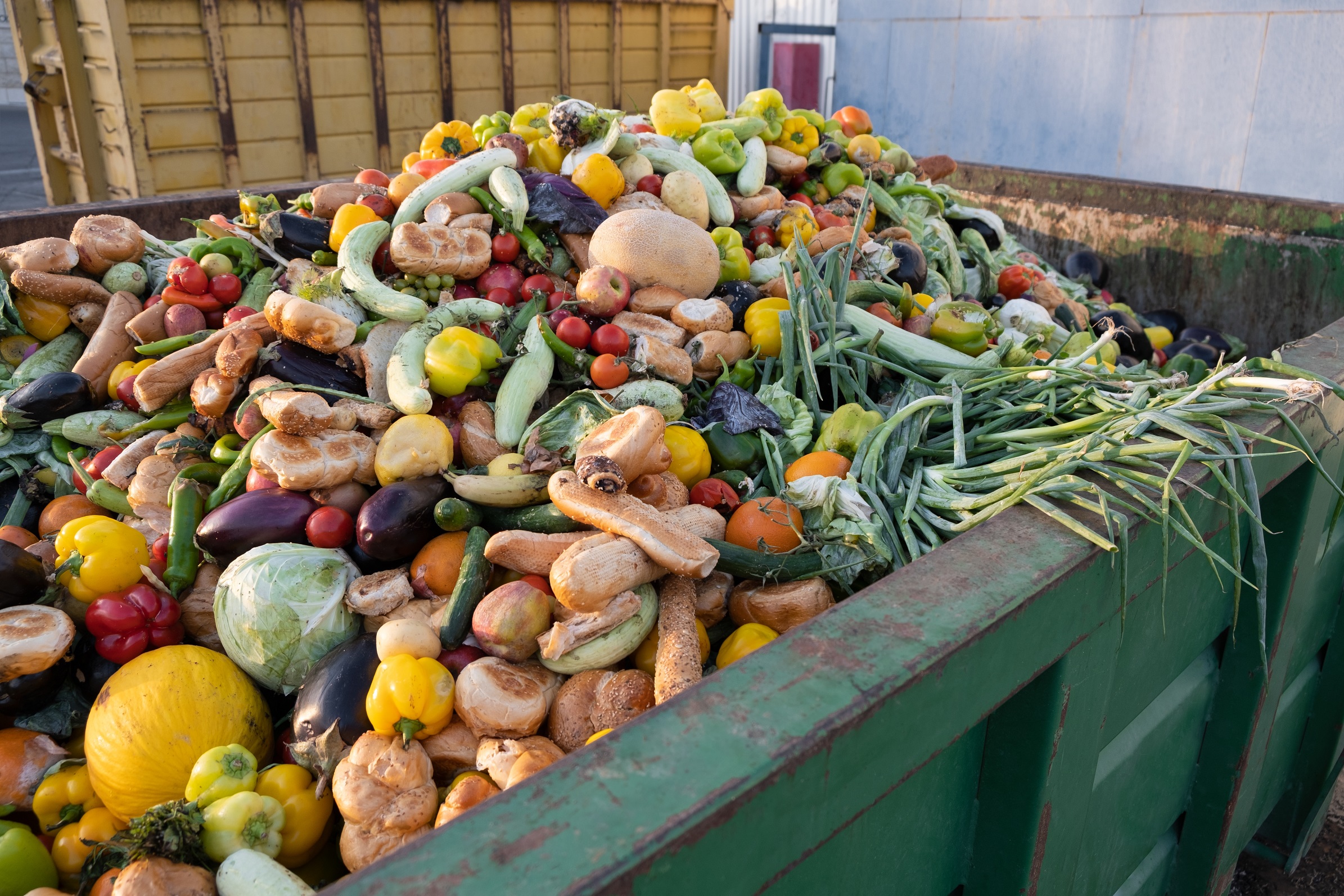How to prevent food waste?

When we think of wasting food, we mainly think of unsold and expired products from stores and restaurants. And this is a big misconception. We are the ones who waste the most food, at home. Why is that? And what to do about it?
Every year, 931 million tons of food is thrown into garbage cans worldwide, according to data from the Food and Agriculture Organization of the United Nations (FAO, 2021). That’s as much as 17 percent of what is produced. The FAO has calculated that this would be enough to feed 1.26 billion people, adding that 828 million people in the world are starving (2021 data, a number that is growing every year), and 3.1 billion don’t have access to a healthy diet.
61 percent of the world’s food is wasted at home. That’s almost 570 million tons per year, an average of 74 kg per person. In this regard, Poland doesn’t differ from the world statistics: The Supreme Audit Office, in its 2021 report, states that households are responsible for 60 percent of discarded food. Nearly a third of all food is lost in agricultural production and processing (15.5 and 15.6 percent, respectively), less than 7 percent in trade, 1.17 percent in catering, and 0.65 percent in transportation. Annually, 4.8 million tons of food is wasted in Poland.
But this is an incomplete picture of the situation, since what grows, for example in the field, is not legally considered to be food.
– According to Regulation (EC) No. 178/2002 of the European Parliament and of the Council of January 28, 2002. “food’ (or ‘foodstuff’) means any substance or product, whether processed, partially processed or unprocessed, intended to be, or reasonably expected to be ingested by humans.” – explains Agata Bieńczak, PhD, head of the Food Technology and Technology Research Group at Lukasiewicz-Poznan Institute of Technology. – Under this regulation, plants (i.e., vegetables, for example) before harvesting are not considered foodstuffs. Plants that remain in the fields during the harvest are a natural fertilizer, she adds.
Why do we throw away so much?
The answer to this question was sought by the Institute for Environmental Protection – National Research Institute. It turned out that food most often ends up in the garbage when:
- it spoils (65.2 percent of responses; several options could be selected in the question),
- its expiration date has passed (42.0 percent),
- too much of it was prepared (26.5 percent),
- too much of it was bought (22.2 percent),
- no forethought was given to the purchase (19.7 percent),
- the food was in excessive packaging (17.0 percent),
- it was improperly stored (14.2 percent),
- low-quality products were bought (10.8 percent),
- there was a lack of ideas on how to use the products to prepare meals (10.3 percent).
A big problem
Food waste is not only an economic or social problem, but also an ecological one. The production of what we eat requires huge amounts of water, energy, and crop protection products. The food sector is responsible for 27 percent of global greenhouse gas emissions. It also consumes 70 percent of drinking water and contributes to water pollution (we recommend the text “On water without frothing” from our blog) more than other industries. It is also responsible for the destruction of vast tracts of forests, which are used for pastures and farmlands.
The FAO has calculated that the food items we dispose of are responsible for the equivalent of 3.3 gigatons of carbon dioxide emissions. If wasted food were a country, it would become the third largest CO₂ emitter in the world (after China and the United States). The water we lose in this way has a volume of 250 km³. That’s as much as the annual flow of Russia’s Volga River or three times the volume of Lake Geneva in Switzerland. Nearly 1.4 billion hectares, or 30 percent of arable land, is used to produce food that won’t be eaten by anyone.
The seriousness of the problem has been recognized by politicians. In 2015, the UN General Assembly adopted the 2030 Agenda for Sustainable Development. One of the 17 Sustainable Development Goals stipulated therein is to ensure patterns of sustainable consumption and production (Goal 12, specifically 12.3: By 2030, halve per capita global food waste at the retail and consumer levels and reduce food losses along production and supply chains, including post-harvest losses).
How to change this?
Since most food is wasted in households, we – as consumers – have a lot to do. Which foods most often end up in my trashcan? Why does this happen? Have they gone bad? Were they forgotten at the bottom of the cupboard – and expired? Didn’t taste good? I bought too much and had no idea what to do with it? Are they leftover meals, uneaten by children, for example? The answer to these questions is important, because it helps us realize why we throw away food – and how we can try to change it.
What else can we do?
- Plan our meals. Then we know what we need to buy and move smoothly to the next point:
- Go shopping with a list of products. A lot of spontaneous purchases made on the basis of “how about this” or “there’s a sale” don’t get consumed, especially if we stash them away for later and then forget. Sticking to a shopping list also helps a lot in reducing expenses – double benefit. If we can’t convince ourselves to do it or don’t have time to create one, it’s helpful to take a picture of the contents of the refrigerator, then you can see what you have and in what quantity.
- It’s easy to make large purchases once a week, but some products (vegetables, fruits, baked goods) are better to buy in smaller quantities but more often. Then they will be fresh and we won’t have to throw away dried lettuce, for example.
- Ugly is good too! After all, taste does not depend on beauty. We forget this, buying with our eyes, and then twisted carrots or ugly apples end up in store waste garbage cans.
- Buy local products. Not only do they have a smaller carbon footprint, but we also reduce waste in transportation.
- Pay attention to the dates on the package. There is a difference between the phrase “best before” and “should be consumed by.” The former specifies the date until which the product, if stored properly, should retain its flavor and texture. This is the date of minimum shelf life, which means that even if we go a little past it, we can safely eat the item, although it is worth smelling, watching and tasting it (especially if more time has passed since the date) beforehand. In turn, “should be consumed by” refers to food safety, and after this date we should not consume the product in question, as it may harm us.
- Properly store food. In the refrigerator, the coldest shelves are usually the bottom shelves (above the freezer), there we should keep meat, cheese or eggs. It’s a good idea to put things that need to be eaten faster within sight, not in the depths of the refrigerator. The appliance itself should cool to 4-5 degrees C.
- Freeze and process surplus food. Got a piece of meat left over from dinner? It can go into a sandwich or casserole. Bread has gotten old? Breadcrumbs, croutons for soup or a casserole are other ways to use it. Have some vegetables left over? Make a salad. Groats or potatoes can enrich a soup; millet groats can be the basis of a dessert.
- What we reflexively throw away can also be eaten. Check out the recipe for pesto from radish leaves or chips from potato peelings or cauliflower leaves.
- Turn leftovers into compost – you’ll get a natural fertilizer for the garden or houseplants.
- When ordering food at a restaurant, choose smaller portions and maybe something else in case it’s not enough. And if there is something left on the plate nevertheless? Ask for a package and take it home.
- Share the food. Did the apple tree on the allotment bear fruit? Why don’t you gift the apples to your neighbors, family, or just put them out in front of your house for others to take? Many cities have eateries or community kitchens that are happy to accept surplus food, not just after the holidays.
The Too Good To Go app is becoming increasingly popular. It allows stores and restaurants to sell surplus food and save it from ending up in the trash, while app users can buy it at bargain prices (1/3 of the original). Worldwide, Too Good To Go already has 81 million registered users and 134,000 partners, and 250 million rescued meals to its credit (data as of August 2023).
How about a veggie burger?
Specialists from Lukasiewicz-Poznan Institute of Technology, operating in consortia with other entities, have also made their contribution to reducing food waste. They have constructed a prototype for producing veggie burgers from frozen vegetable scraps. These are parts of vegetables that are too small and don’t meet the qualification standards to go on sale as single-ingredient frozen vegetables (such as tiny florets of broccoli or cauliflower) but are nonetheless full-flavored.
Besides the machine, the researchers also developed a technological process that is advantageous for the mechanical formation of the cutlet (it has an optimal shape and visible pieces of vegetables that don’t deform as they pass through the various stages of production).
Another device is a processing line for the management of eggs that have been damaged or unsuitable for packaging and sale (due to a weak shell – microcracking) and considered waste requiring disposal. The result is an egg pulp that can be used by bakeries or confectioneries, or separately the whites and yolks with an extended shelf life.
Check out our offerings in food technology and engineering.




